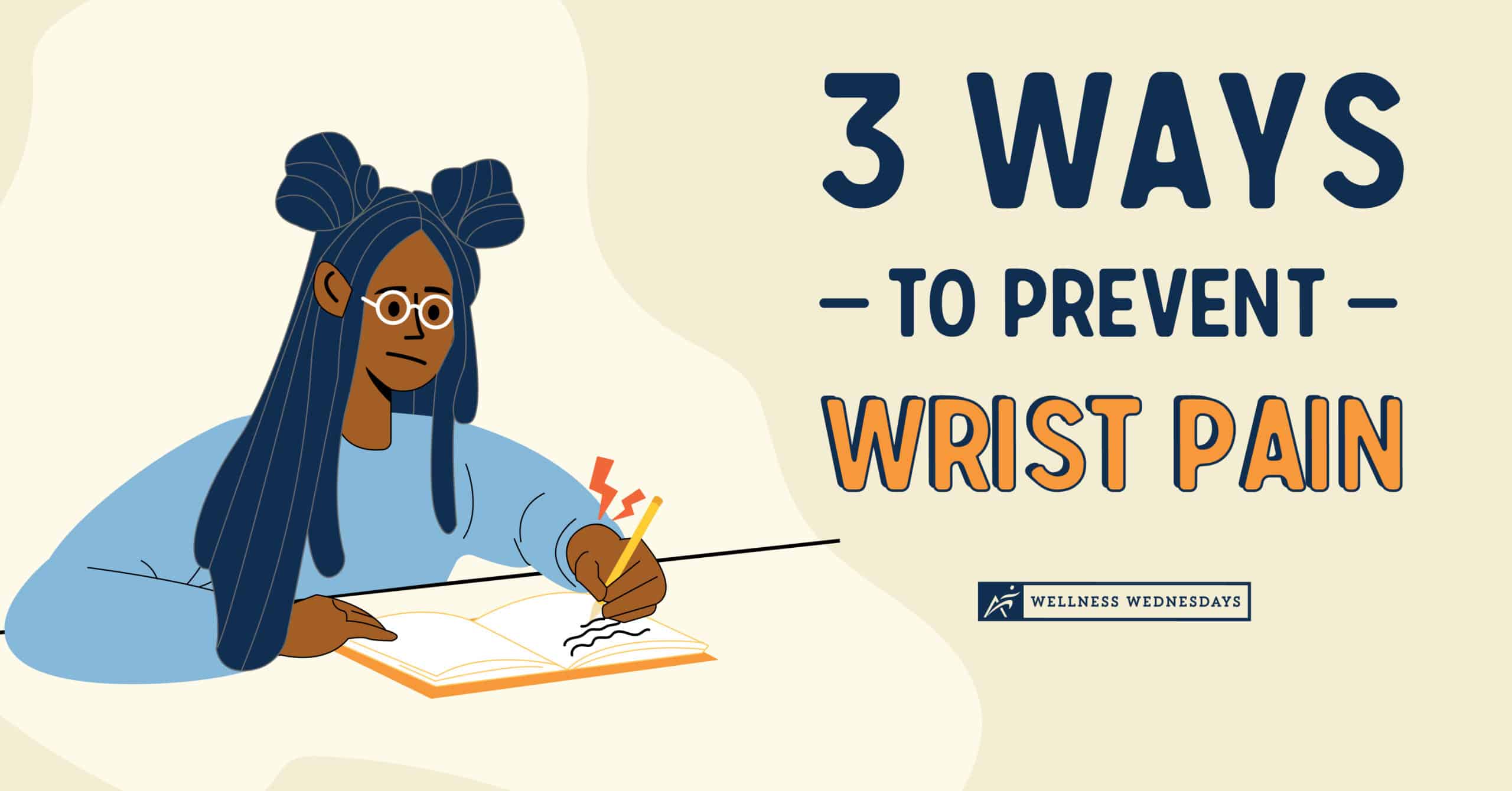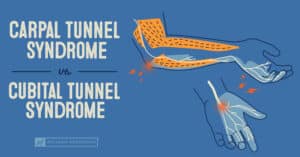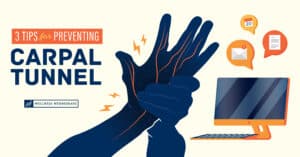Too often we assume our hand or arm pain will eventually go away with enough rest, but what if your wrist pain is a sign of a more serious condition? Here’s how to determine if your symptoms indicate a nerve entrapment syndrome and a few tips to prevent wrist pain and alleviate it.
This article was written by Airrosti’s Dr. Denyse Rowland-Jones, DC. She explains the difference between two common causes of wrist pain: carpal tunnel syndrome and pronator teres syndrome.
How Nerve Entrapment Syndrome Causes Wrist Pain
Wrist pain often appears as a symptom of median nerve entrapment syndrome. The median nerve is a long nerve that starts in the neck and branches into the arm, passing through the carpal tunnel of the wrist and into the hand. Median nerve entrapment syndromes are conditions where the median nerve is compressed and irritated by another part of the arm.
Because the median nerve runs down the full length of the arm, there are many distinct places this nerve can be compressed, but the two most common median nerve entrapment syndromes are carpal tunnel syndrome (CTS) and pronator teres syndrome (PTS). Both syndromes have similar symptoms, such as wrist and hand pain, decreased grip strength, and a tingling or numbing sensation in the hand. Additionally, the pain can be so bad that even tasks like driving can become a challenge.
Although the signs and causes of both CTS and PTS are similar, there are subtle variances between the two syndromes and their indicators that will ultimately affect how your pain is diagnosed and treated.
Carpal Tunnel Syndrome (CTS)
Carpal tunnel syndrome is the most common case of median nerve entrapment syndrome. CTS develops when the median nerve within the carpal tunnel becomes compressed and causes pain and swelling in the wrist. Other symptoms include hand pain, and sometimes pain or numbness in the fingers. The fingers affected by CTS include the thumb, index, middle, and ring fingers. Since the median nerve does not extend to the pinky, your pinky finger should not be affected.
Pain from carpal tunnel syndrome will be felt exclusively in the wrist and hand since the location of compression is in the carpal tunnel within the wrist. These symptoms are usually more painful at night but can also be present during daily activities like writing or driving. People in jobs that involve repetitive wrist movements like manufacturing, construction, or typing for extended hours are at a higher risk of developing carpal tunnel syndrome.
Pronator Teres Syndrome (PTS)
While pronator teres syndrome is not as common as carpal tunnel syndrome, it is often confused with CTS due to the similarity of symptoms. PTS occurs when the pronator teres muscle, located just below the elbow, becomes inflamed and compresses the median nerve.
The symptoms of PTS include an aching pain in the forearm, tenderness on the palm side of the elbow, and weakness in the affected arm and hand. Some people may experience numbness, tingling, and pain in the palm, thumb, and index finger. Although both carpal tunnel syndrome and pronator teres syndrome include hand, wrist, and finger pain, any pain that is localized in the forearm is only seen in pronator teres syndrome.
Like carpal tunnel syndrome, PTS is caused by repetitive arm movements. Overuse and excessive exercise can irritate the pronator teres muscle and cause PTS symptoms. Most often, people with jobs or sports that require overhand movements, such as manual labor, baseball, or football, are at a high risk of developing PTS.
How to Relieve and Prevent Wrist Pain
Whether you’re currently suffering from wrist pain, or if you’re just trying to prevent these common conditions from developing, try these simple tips to help stay pain-free.
1) Wrist Splinting at Night
Wrist splinting at night can help those who already have mild or moderate symptoms of carpal tunnel syndrome. When you’re asleep at night, your wrist might bend at awkward angles or be compressed by your own body weight. If you have carpal tunnel syndrome, your wrist pain is likely to get worse at night due to these unconscious movements. By using a wrist splint when you sleep, you can reduce some of the symptoms of carpal tunnel syndrome and avoid adding unnecessary strain to your wrist.
2) Arm and Wrist Strengthening Exercises
Because nerve entrapment syndrome can stem from weakened arms or wrists, it is important to counter any muscular imbalance by targeting the affected areas. Try the exercises below to strengthen your wrists and arms.
*Disclaimer: Always consult with your doctor before starting any exercise program. If you experience any numbness, tingling or reproduction of your symptoms, please contact your doctor.
Wrist Extension Exercise
- Place a band under your foot.
- Place your forearm on a table with your hand off the edge of the table.
- Hold the band in your hand with your palm facing down and bend your wrist upward, keeping your forearm still.
- Return and repeat 10 times for 2 sets.
Wrist Flexion Exercise
- Place an elastic band under your foot or another heavy object.
- Hold the band in your hand with your palm facing up and place your forearm on a table with the hand off the edge of the table.
- Flex the wrist upward without moving the forearm.
- Return to the starting position.
- Complete 5 – 10 repetitions.
3) Lacrosse Ball Exercise
One last exercise you can try is a forearm flexor massage with a lacrosse ball. This is an effective way to target those smaller muscles in the forearms with more precision while reducing muscle stiffness and pain.
- Take the lacrosse ball and place it on your forearm.
- Apply pressure looking for areas that might be a little bit tender.
- When you find a tender area, hold it there until that tenderness lessens.
- It may not go away completely, but then once it lessens move to another location.
- Complete daily as needed.
How Airrosti Fixes Wrist Pain Fast
Nerve entrapment syndrome can keep you from successfully performing activities like household chores, work tasks, or even something as simple as driving. If left untreated, your condition, whether it is carpal tunnel or pronator teres syndrome, can continue to hinder your quality of life.
If you’ve taken preventative measures and tried exercises and stretches, but your wrist pain is still giving you trouble, schedule an appointment with Airrosti today, either in clinic or remote. Once seen, your Airrosti Provider will thoroughly assess your condition, and create a personalized treatment plan for you. You will also receive injury education, resources, and tools to continue your recovery at home and prevent wrist pain from returning!
Call (800) 404-6050 for more information.
Read our Medical Disclaimer here.










